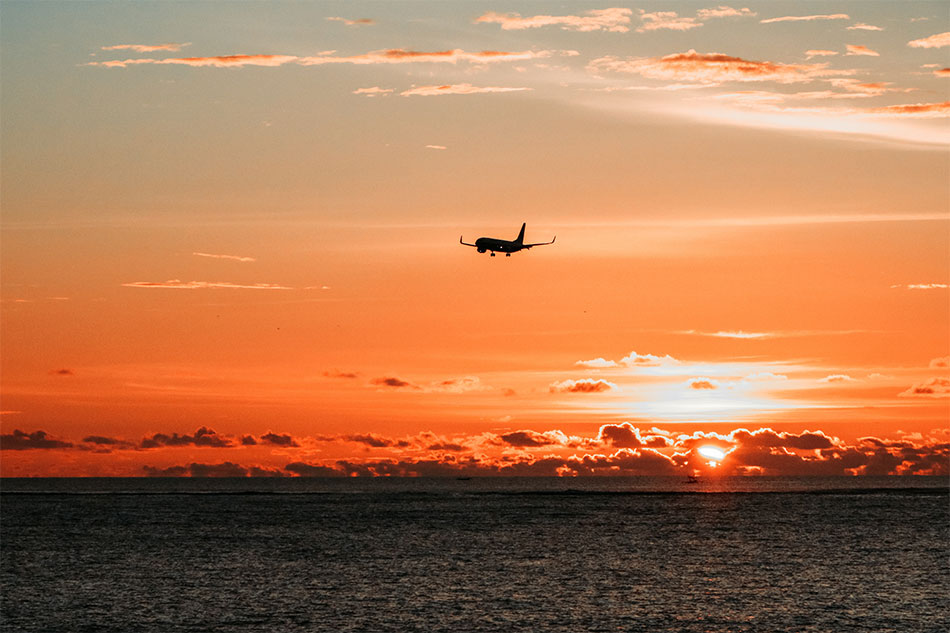Archeology in the Holy Land Tour
Israel is not only “The Land Where Yeshua Walked” but it is a unique land filled with archaeological discoveries that are still being excavated to this day. A country with rich history from thousands and thousands of years ago, this tour takes a further dive into the historical findings of civilization while remaining focused on Biblical history and sites. Highly recommended for students or your everyday history buff!
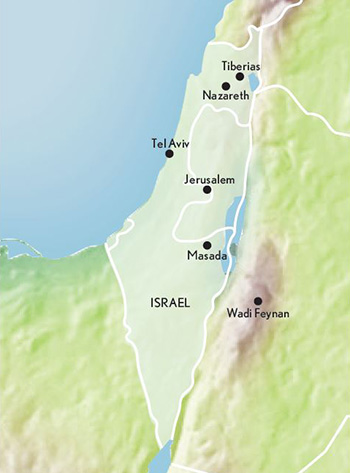
ITINERARY
Day by Day

Day One: Departure
Board for your flight from the USA to Israel. This will be an overnight flight, arriving the next day to Tel Aviv.
Day Two: Welcome to the Land of the Bible!
After arrival at Ben Gurion Airport, reception and assistance, we will drive to our hotel for check in, welcome dinner and an introductory session on the subject of: Latest Archeological Finds in the Holy Land
-Overnight in Tel Aviv

(View of Jerusalem)

(Caesaera Amphitheater)
Day Three: The Mediterranean Coastline
Today we visit Caesarea Maritima (Acts 8:40), Herod’s magnificent coastal city, with fine Roman and Crusader buildings. Particularly impressive are the amphitheater, hippodrome and the nearby aqueduct. From there we continue to Mount Carmel (1 King 18:16-39), where the Prophet Elijah challenged the prophets of Baal. Our next stop is Megiddo (Zechariah 12:11), in the Valley of Armageddon. Inhabited approximately from 6500 to 600 B.C. the site forms a classic “tel” showing the layers of civilizations which have been excavated. As this day draws to a close we head to Tiberias.
-Overnight in Tiberias
Day Four: Around the Sea of Galilee
This day begins at Magdala (Luke 8:1-3) on the shores of the Sea of Galilee, the hometown of Mary Magdalene. The site includes an ancient synagogue where it is believed the earliest Judeo-Christians worshipped. We continue to Capernaum, a fishing village established during the time of the Hasmoneans, located on the northern shore of the Sea of Galilee and where Jesus preached and healed. Archaeological excavations have revealed two ancient synagogues built one over the other, and a house turned into a church by the Byzantines is believed to have been the home of Saint Peter. Next is the Beit Yigal Alon Museum housing the 2000-year-old fishing boat also known as the “Jesus Boat”, found in the Sea of Galilee. Enjoy prayer and worship while sailing on the Sea of Galilee (Matthew 14:25) in a wooden boat. Afterwards continue to Tabgha (Mark 6:30), the traditional site where Jesus fed the multitudes. The earliest building on site is a small chapel built in the 4th century A.D.
-Overnight in Tiberias
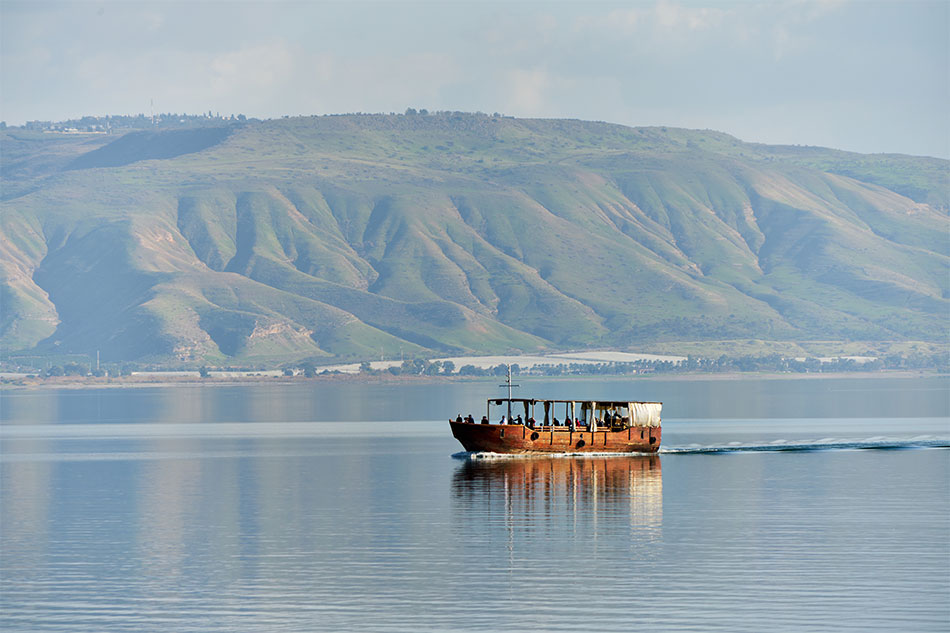
(Boat Tour in the Sea of Galilee)

(Rujm El-Hiri Stone Monuments)
Day Five: The Golan Heights
Today we ascend to the Golan Heights, on the border between Israel and Syria. The area boasts a special selection of archeological sites, including:
- Rujm el-Hiri, an ancient megalithic monument consisting of concentric circles of stone.
- Hippos (Sussita), the site of a Greco Roman city between the 3rd century B.C. and the 7th century A.D.
- Kursi (Luke 8:26-39), the archaeological site containing the ruins of a Byzantine monastery and identified by tradition as the site of Jesus’ “Miracle of the Swine”.
- Caesarea Philippi (Matthew 16:13), a city of Greek-Roman culture known for its worship of foreign gods, where Jesus asked, “Who do people say that the Son of Man is?”
-Overnight in Tiberias
Day Six: Along the Jordan Valley
We begin our morning at the Yardenit Baptismal site, where the Sea of Galilee empties into the Jordan River. Robes and changing facilities are provided for those wishing to be baptized. We then travel to the beautifully preserved Crusader fortress of Belvoir, overlooking the northern Jordan Valley. Next is Beit She’an (1 King 4:7-12) strategically located in a fertile valley at the crossroads between the center and the north of the land, and between the Mediterranean and lands to the east. Inhabited as far back as the Chalcolithic period, the city was at its most prosperous during the Roman and Byzantine periods. We’ll head south towards Jericho (Joshua 5:13), the oldest continuously inhabited town on earth. Afterwards we drive into Jerusalem, enjoying a panoramic view of the Old City from Mount Scopus.
-Overnight in Jerusalem
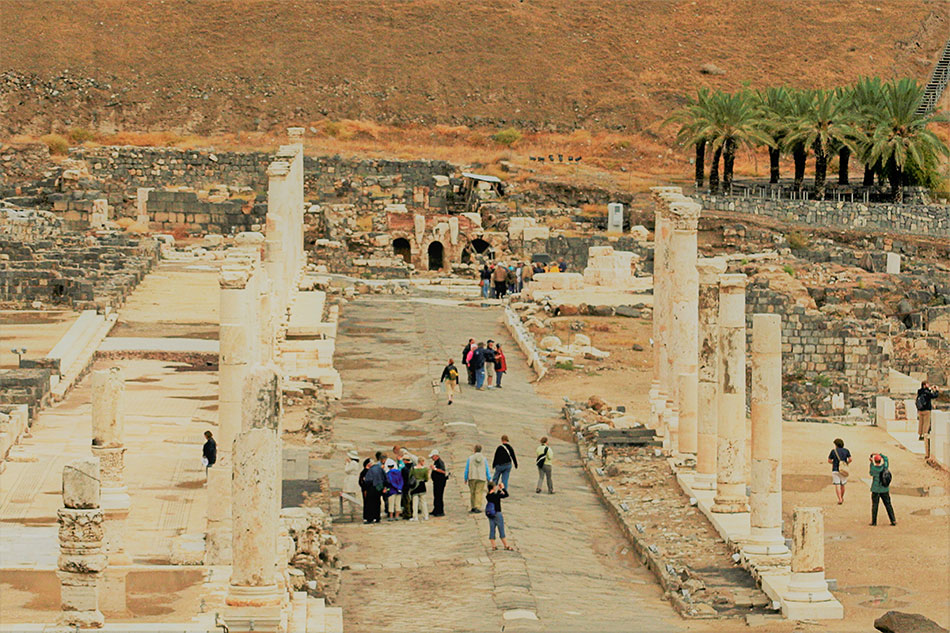
(Beit She’an)
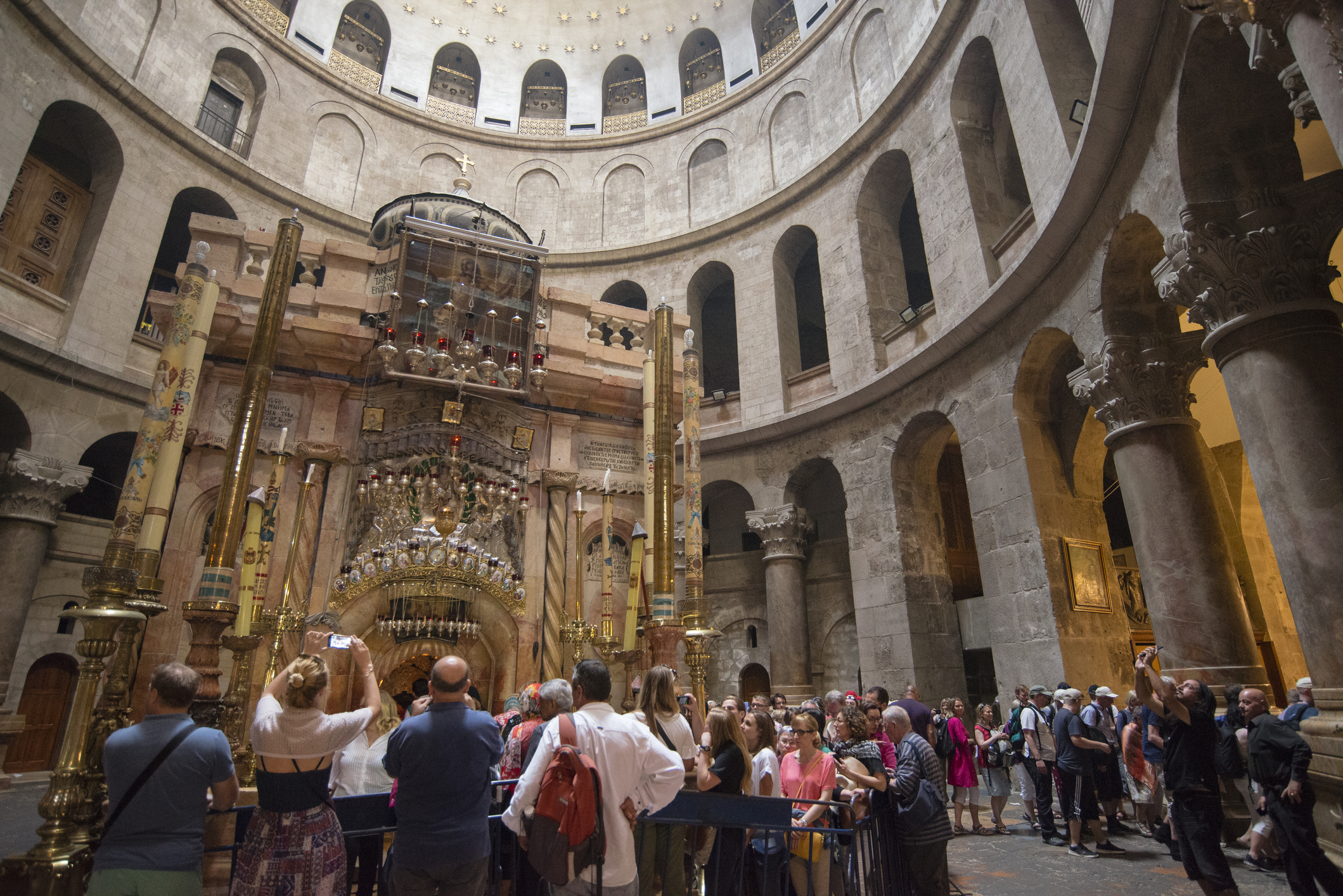
(Church of the Holy Sepulchre)
Day Seven: The Holy City
We begin the morning on the Mount of Olives (Matthew 24:3), prior to descending towards the Garden of Gethsemane (Luke 22) for prayer and meditation in the ancient olive groves. Walk along the Way of the Cross, visiting the Church of St. Anne and the Pool of Bethesda (John 5:2). Excavations have revealed the remains of the Byzantine and Crusader churches. We also walk the site of Aelia Capitolina, where Roman Emperor Hadrian built a city on top of old Jerusalem, and house many temples dedicated to pagan gods. Our route through Jerusalem’s Old City continues along the Way of the Cross towards the Church of the Holy Sepulcher (John 19:38-42), believed to be the site of Jesus’ crucifixion. We’ll close out our day in communion and worship at the Garden Tomb (John 19:38-42), located in the heart of historic Jerusalem, just outside the Old City walls. On site there is an ancient Jewish tomb which many believe is the site of Jesus’ burial and resurrection.
-Overnight in Jerusalem
Day Eight: Ancient Jerusalem
Today we travel back to the beginnings of Ancient Jerusalem at the City of David (2 Chronicles 32:1). Here we visit Hezekiah’s Tunnel, an extraordinary feat of engineering excavated as part of the defenses of the city against the Assyrian army in the 8th century B.C. We continue to the Southern Steps at the Davidson Center. Among the many important findings are the walls of the city from the First Temple period, the steps leading up to the Temple, the original street from the time of the Second Temple period, shops and ritual baths. Today’s touring ends, past the Western Wall, with a walk through the Western Wall Tunnels, which extend under the perimeters of the Temple Mount. The excavations have revealed immense stone courses of the Wall – carefully carved and incredibly well preserved, ancient water pits and an ancient water tunnel from the Hasmonean period that was blocked by Herod when he expanded the site of the Temple Mount.
-Overnight in Jerusalem
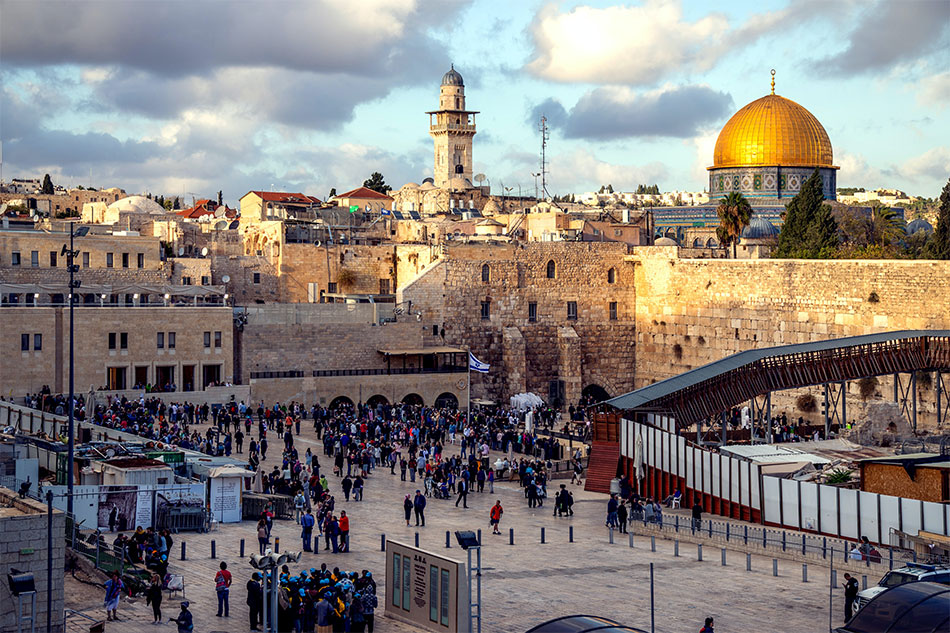
(Western Wall & Temple Mount)

(Dead Sea Scrolls at the Israel Museum)
Day Nine: Jerusalem Today
Our morning begins with a visit to the Israel Museum, home of the Dead Sea Scrolls and the impressive model of the Second Temple period. The tour will include a special visit to the section of the museum dedicated to early Christianity in the Holy Land. Free time is included today for a tasty lunch at the Machney Yehuda Food and Spice market, before driving towards Bethlehem for a tour of the Herodium (Luke 2:4), Herod’s hilltop palace overlooking the Judean Desert, where Herod’s tomb was recently discovered.
-Overnight in Jerusalem
Day Ten: The Dead Sea
On this last day of our tour, we drive to the Dead Sea for a visit to the mountaintop fortress of Masada, built in the year 30 B.C. by King Herod. At the beginning of the great revolt against Rome in the year 68 A.D., the site was conquered by a group of Jewish zealots, and Masada became their last stronghold. After a swim in the Dead Sea, we travel to Qumran, site of the caves where the Dead Sea scrolls were discovered. Return to the hotel to shower and change before a farewell dinner and for the journey home!
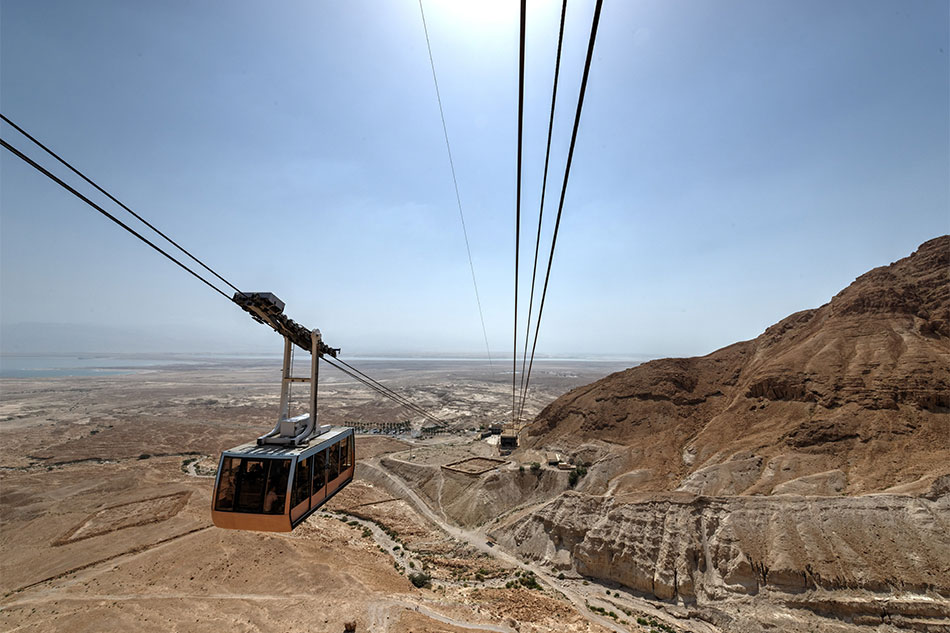
(Masada Cable Car Ride)
